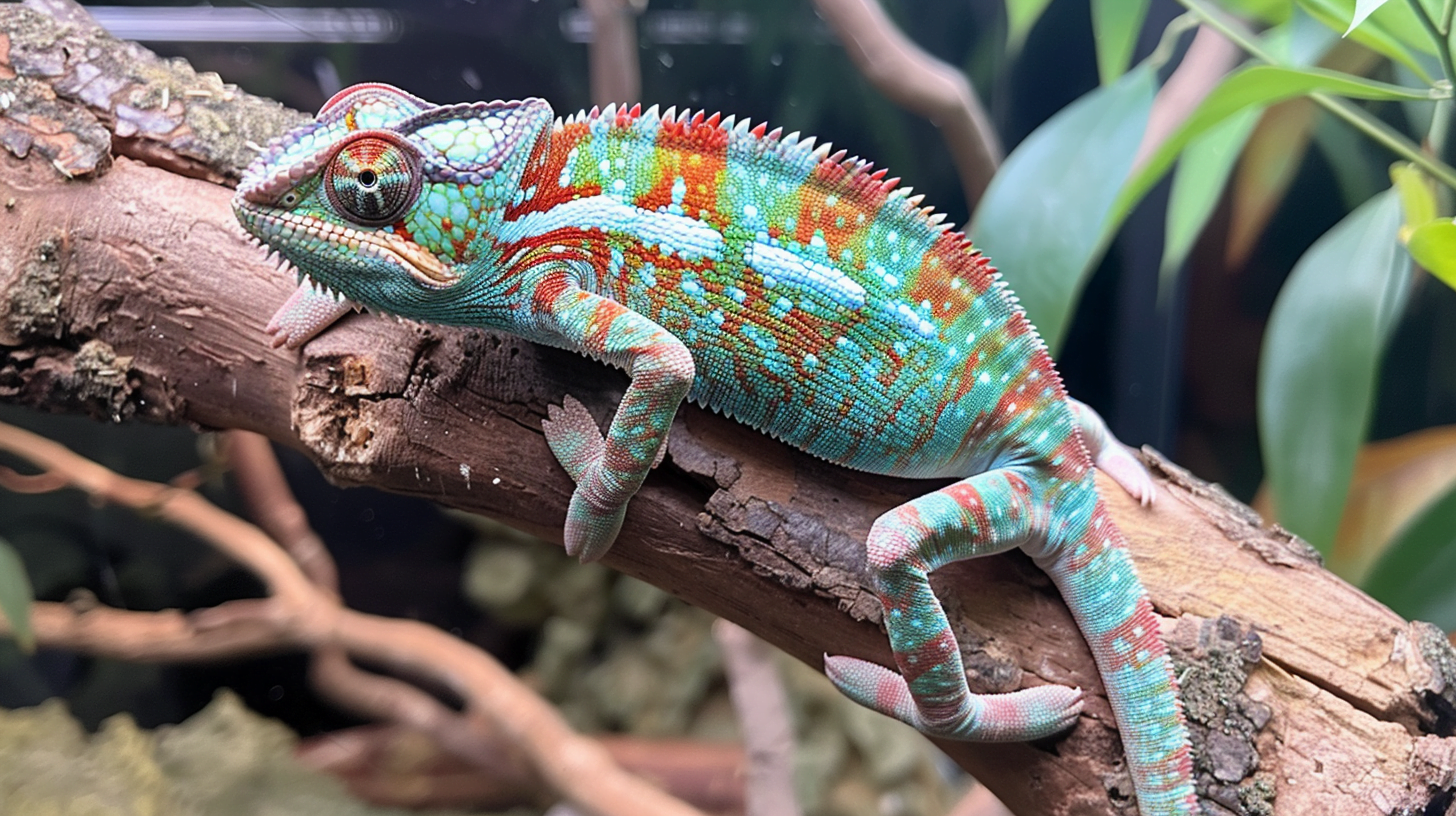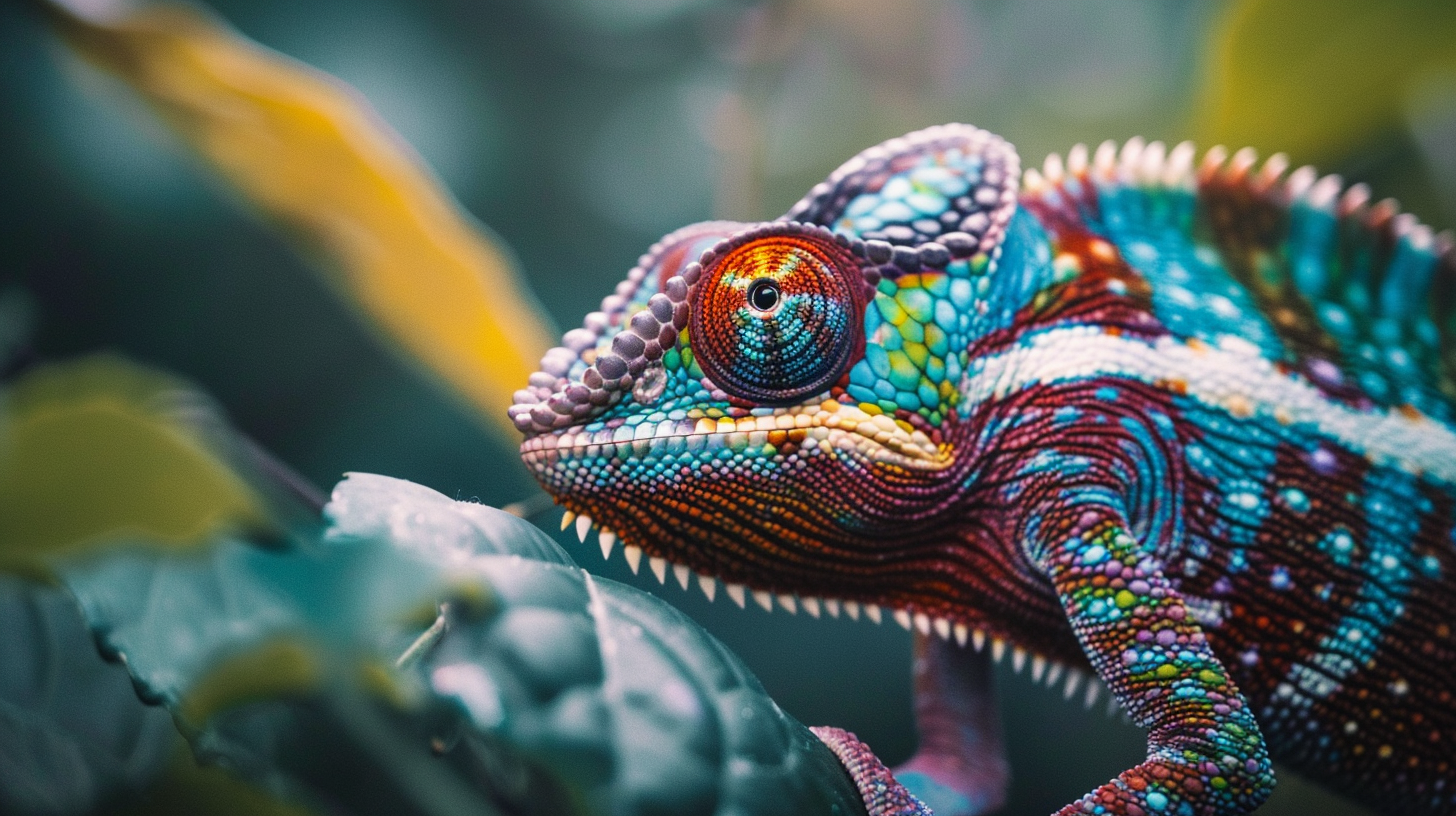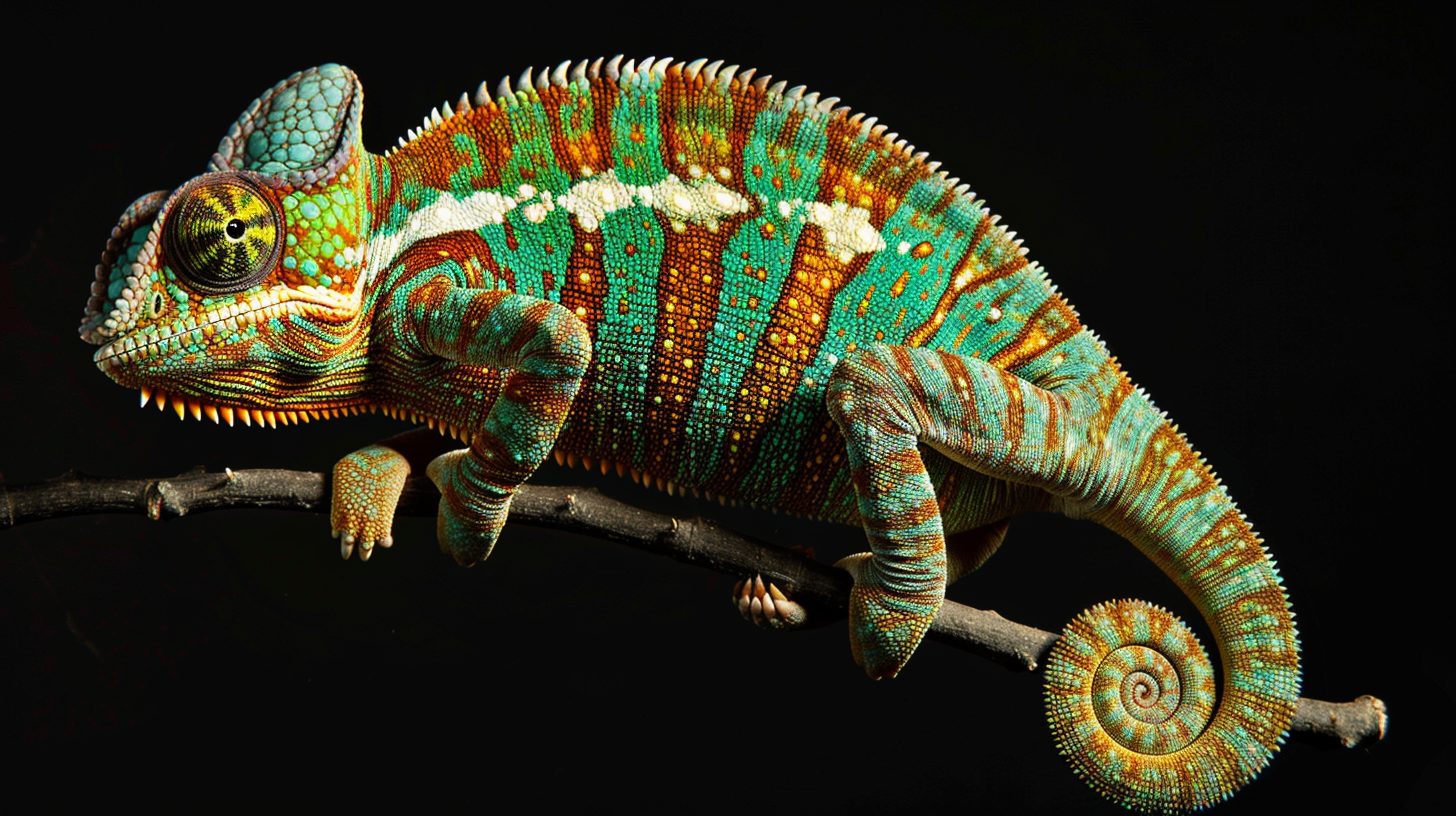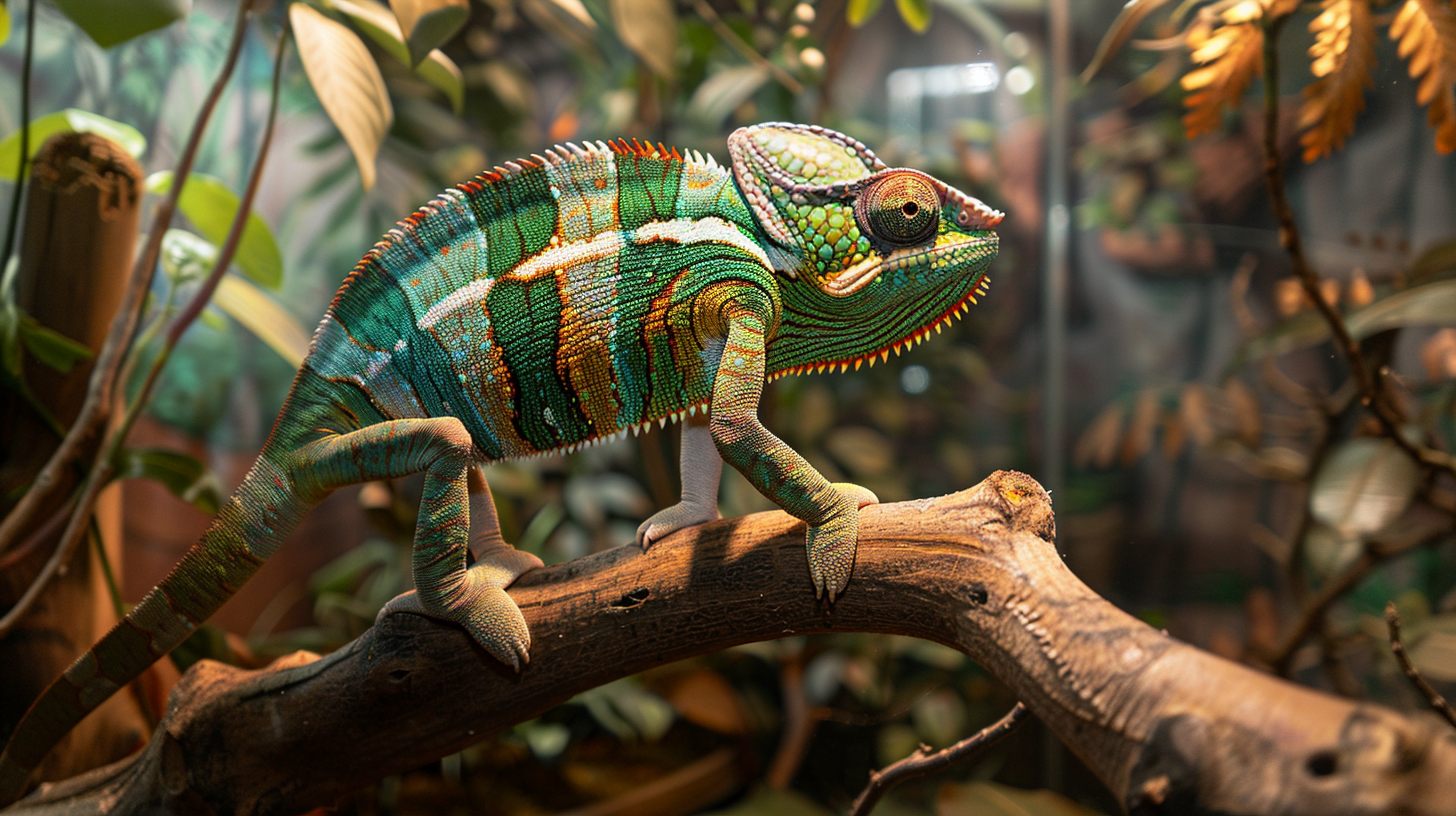Chameleons are fascinating creatures that have captivated the hearts of many animal enthusiasts. With their unique ability to change color, their independent nature, and their intriguing behavior, it’s no wonder why people want to bring them into their homes as pets. However, caring for a chameleon can be a daunting task, especially for those who are new to reptile care. The question remains: are chameleons hard to take care of?
Understanding Chameleon Behavior and Needs
What Makes Chameleons Unique Pets?
Chameleons are not your typical pets. They are exotic, requiring specific care and attention that is vastly different from dogs, cats, or even other reptiles. In their natural habitats, chameleons are adapted to living in trees, where they can climb, hunt, and thrive in a warm, humid environment. They have evolved to be solitary animals, only coming together for mating. This solitary nature is essential to understand, as it affects how we care for them in captivity.
Chameleon Communication and Socialization
Chameleons communicate in various ways, including:
- Color changes: Chameleons change color to express emotions, regulate body temperature, and camouflage themselves.
- Body language: They use postures, such as puffing up or flattening, to convey aggression or fear.
- Vocalizations: Chameleons make sounds, like hissing or chirping, to express distress or courtship.
Providing a suitable enclosure that allows for climbing, hiding, and visual stimulation is crucial for a chameleon’s mental and physical well-being. A well-designed enclosure can help reduce stress and promote a sense of security, which is essential for a healthy and happy chameleon.
Housing and Environment
Creating the Perfect Enclosure for Your Chameleon
A chameleon’s enclosure should be designed to mimic their natural habitat as closely as possible. Here are some essential considerations:
- Size: A minimum of 2x3x4 feet (60x90x120 cm) for adults, with taller enclosures preferred.
- Type: Screen or mesh enclosures are recommended for ventilation and to prevent escape.
- Heating: A temperature range of 75-90°F (24-32°C) with a basking spot around 95°F (35°C).
- Lighting: Low-wattage, full-spectrum lighting for 10-12 hours a day.
- Humidity: A relative humidity of 50-60% with a misting system or daily spraying.
Setting Up a Chameleon-Friendly Environment
When setting up your chameleon’s enclosure, consider the following:
- Substrate: Avoid loose substrates like sand or wood shavings, which can cause respiratory issues. Instead, use paper towels, indoor/outdoor carpeting, or reptile bark.
- Decorations: Add plants, branches, and rocks to create a naturalistic environment.
- Hiding places: Provide several hiding places, such as plants, rocks, or commercial hiding places, to reduce stress.
Diet and Nutrition
What Do Chameleons Eat?
Chameleons are carnivores, feeding on insects and small invertebrates in the wild. In captivity, they require a varied diet that includes:
- Live insects: Crickets, mealworms, waxworms, and superworms are all suitable options.
- Commercial foods: Powdered or live foods specifically formulated for chameleons.
- Supplements: Calcium and vitamin D3 supplements are essential for bone growth and development.
Feeding Your Chameleon: Tips and Tricks
Feeding your chameleon requires attention to detail:
- Frequency: Feed juveniles daily, adults 2-3 times a week.
- Quantity: Offer as many insects as your chameleon can consume within 10-15 minutes.
- Variety: Rotate insects and foods to ensure a balanced diet.
Health and Hygiene
Common Health Issues in Chameleons
Chameleons are prone to several health issues, including:
- Metabolic bone disease: Caused by a lack of calcium and vitamin D3.
- Respiratory infections: Often due to poor ventilation or humidity.
- Dehydration: Common in chameleons that are not drinking enough water.
Keeping Your Chameleon Clean and Healthy
Regular cleaning and monitoring are crucial for your chameleon’s health:
- Clean the enclosure: Remove feces and uneaten food daily, and clean the entire enclosure weekly.
- Monitor for signs of illness: Look for changes in appetite, color, or behavior.
- Provide a clean water source: Change water daily, and ensure it’s clean and fresh.
Handling and Interaction
Can You Handle Chameleons?
Chameleons are not typically considered handling pets, but with gentle and careful interaction, they can become tolerant of human touch. However, it’s essential to respect their boundaries and:
- Handle gently: Support the body and tail, avoiding the legs and feet.
- Handle briefly: Start with short sessions, gradually increasing time as your chameleon becomes more comfortable.
- Observe behavior: If your chameleon shows signs of stress, stop handling immediately.
Building a Bond with Your Chameleon
Building a bond with your chameleon requires patience and understanding:
- Observe and learn: Watch your chameleon’s behavior, learning their preferences and personality.
- Provide a stress-free environment: Ensure the enclosure is clean, well-ventilated, and free from stressors.
- Interact gently: Offer food or interact with your chameleon in a calm, gentle manner.
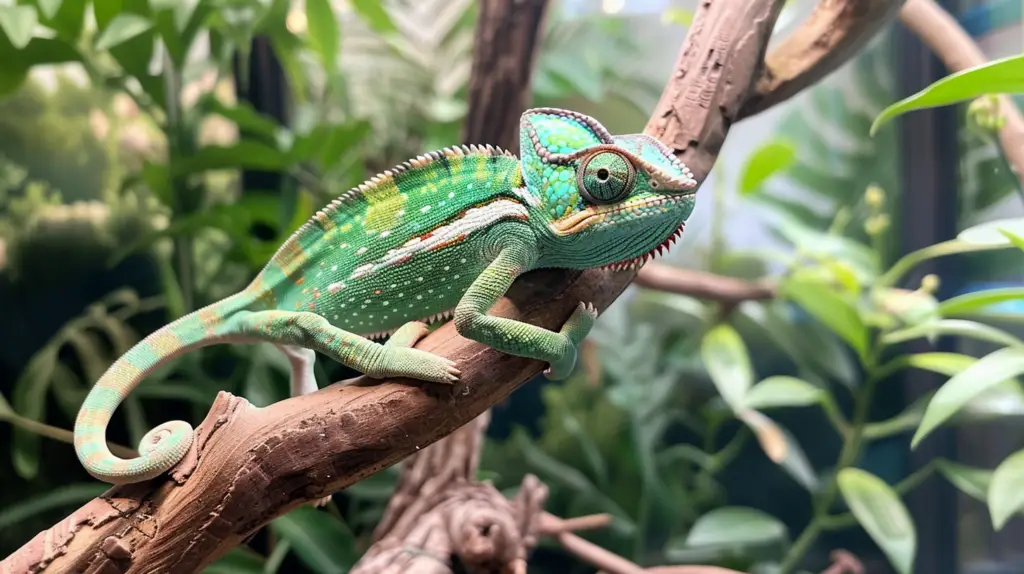
Special Considerations
Chameleon Life Cycle and Growth
Chameleons go through several growth stages, including:
- Hatchling: 0-6 months, requiring a diet rich in protein and calcium.
- Juvenile: 6-12 months, during which they grow rapidly.
- Sub-adult: 1-2 years, where they continue to grow and develop.
- Adult: 2+ years, where they reach their full size and coloration.
Breeding Chameleons: Is It for You?
Breeding chameleons can be a rewarding experience, but it’s not for everyone. It requires:
- Experience: A deep understanding of chameleon care and breeding.
- Specialized equipment: A separate breeding enclosure and equipment.
- Responsibility: A commitment to finding homes for the offspring.
Conclusion
Are chameleons hard to take care of? While they do require specific care and attention, the rewards of owning a healthy, happy chameleon far outweigh the challenges. By understanding their behavior, providing a suitable environment, and attending to their diet and health, you can create a thriving habitat for your chameleon. Remember, every chameleon is unique, and with patience, observation, and gentle care, you can build a strong bond with your pet.
Final Thoughts
Owning a chameleon is a significant responsibility, but with the right knowledge and attention, it can be a incredibly rewarding experience. By following the guidelines outlined in this article, you can provide your chameleon with the care they need to thrive. Remember to always do plenty of research, consult with experienced breeders or veterinarians, and prioritize your chameleon’s health and well-being above all else.
